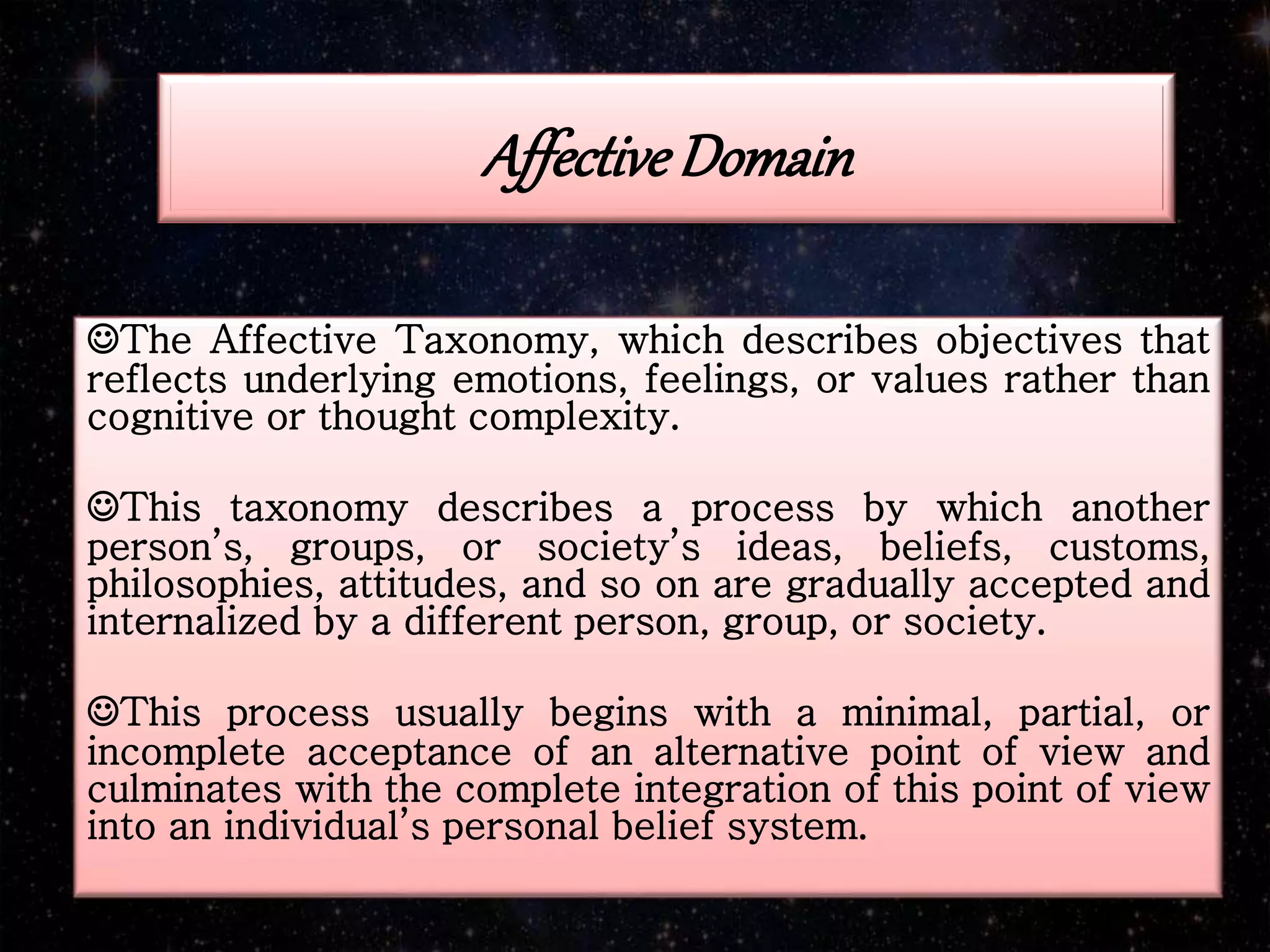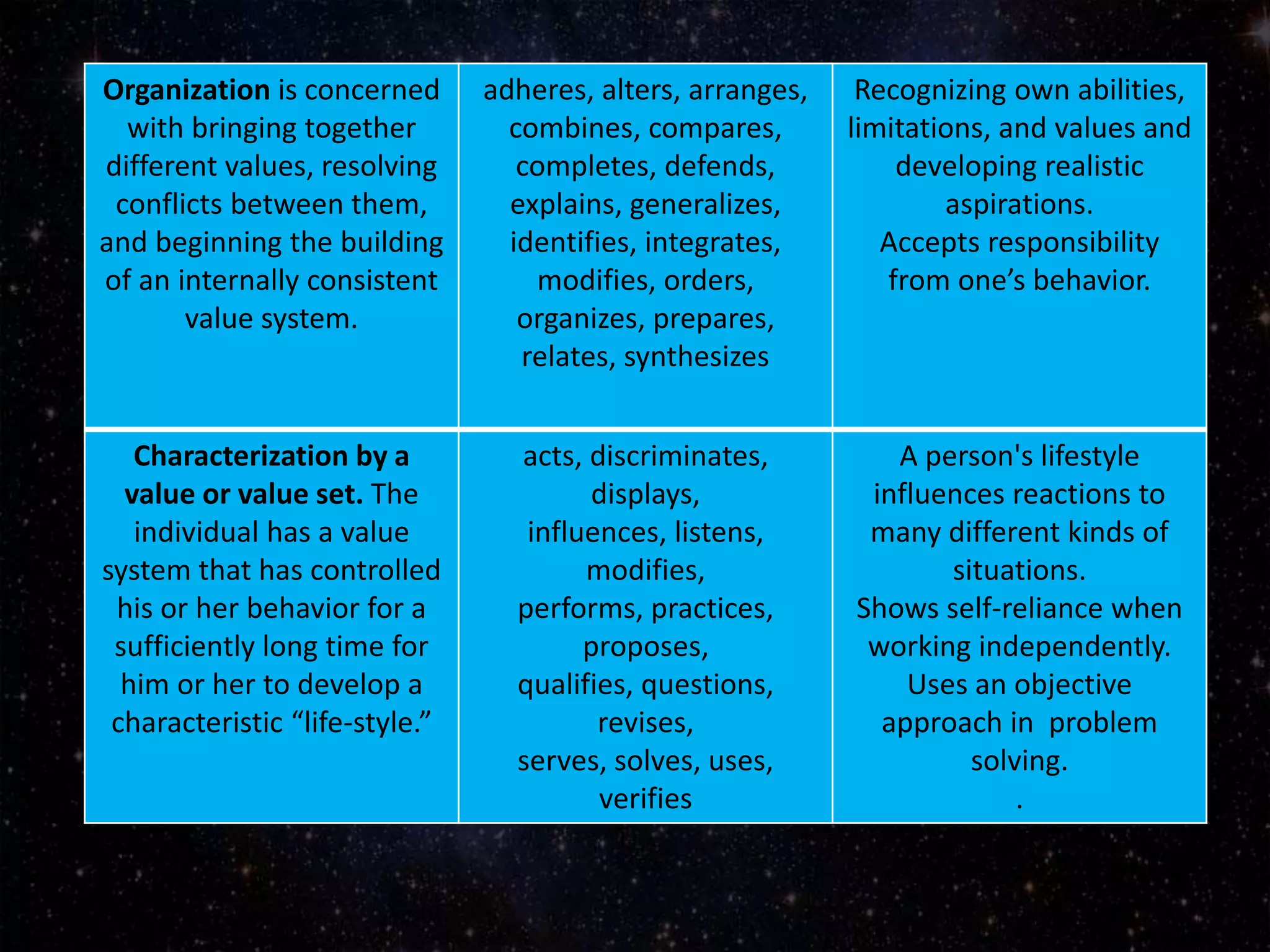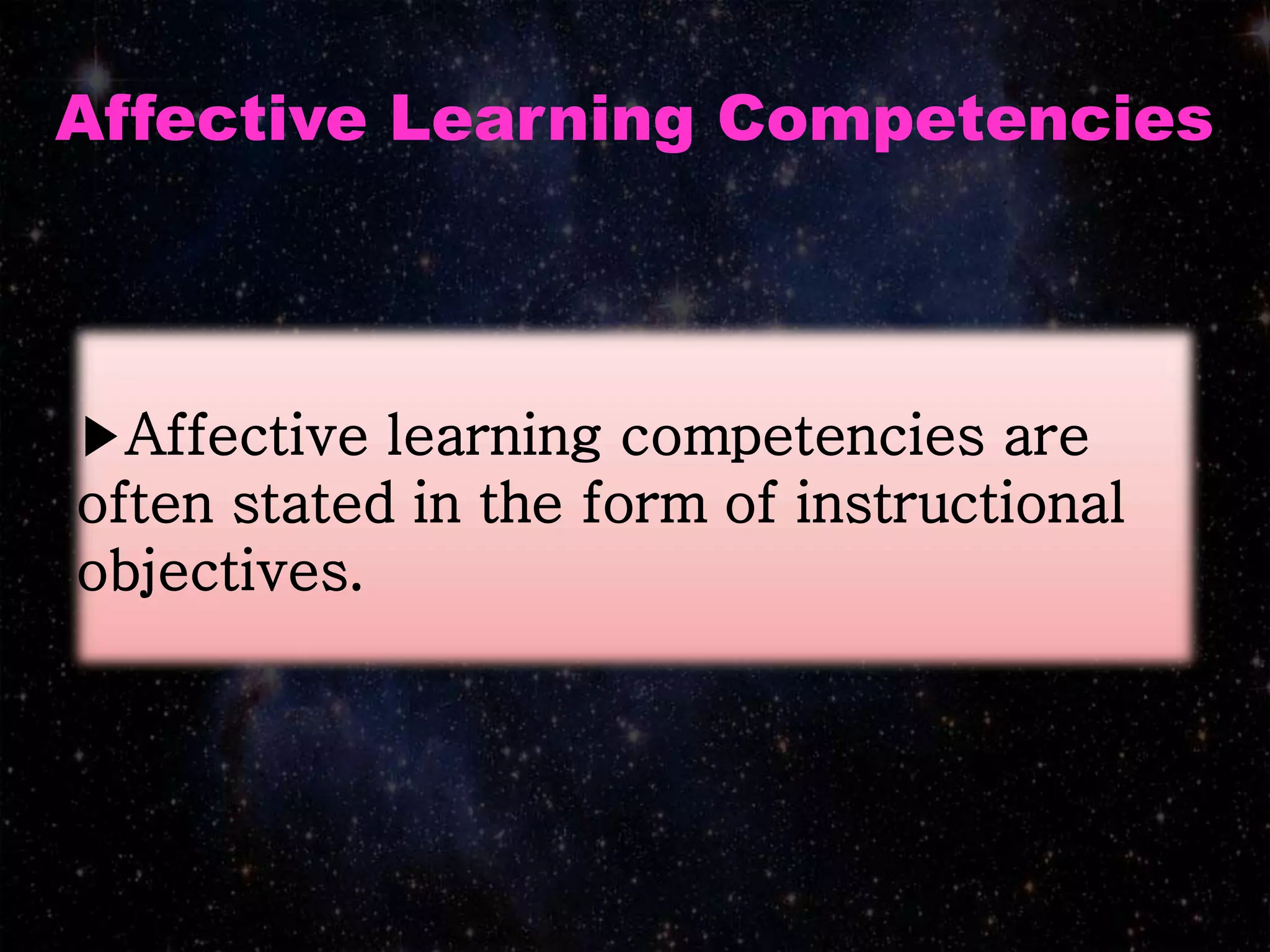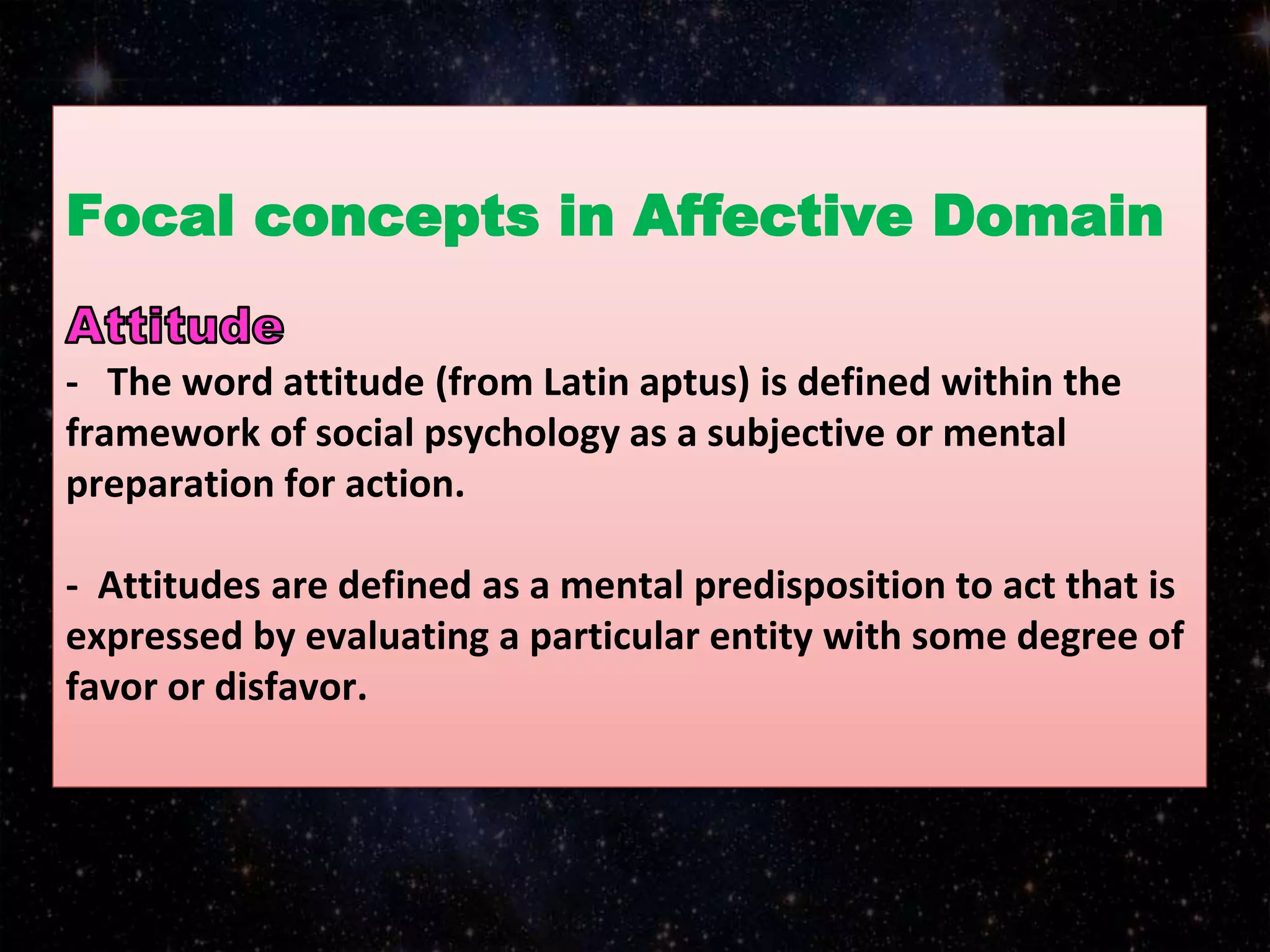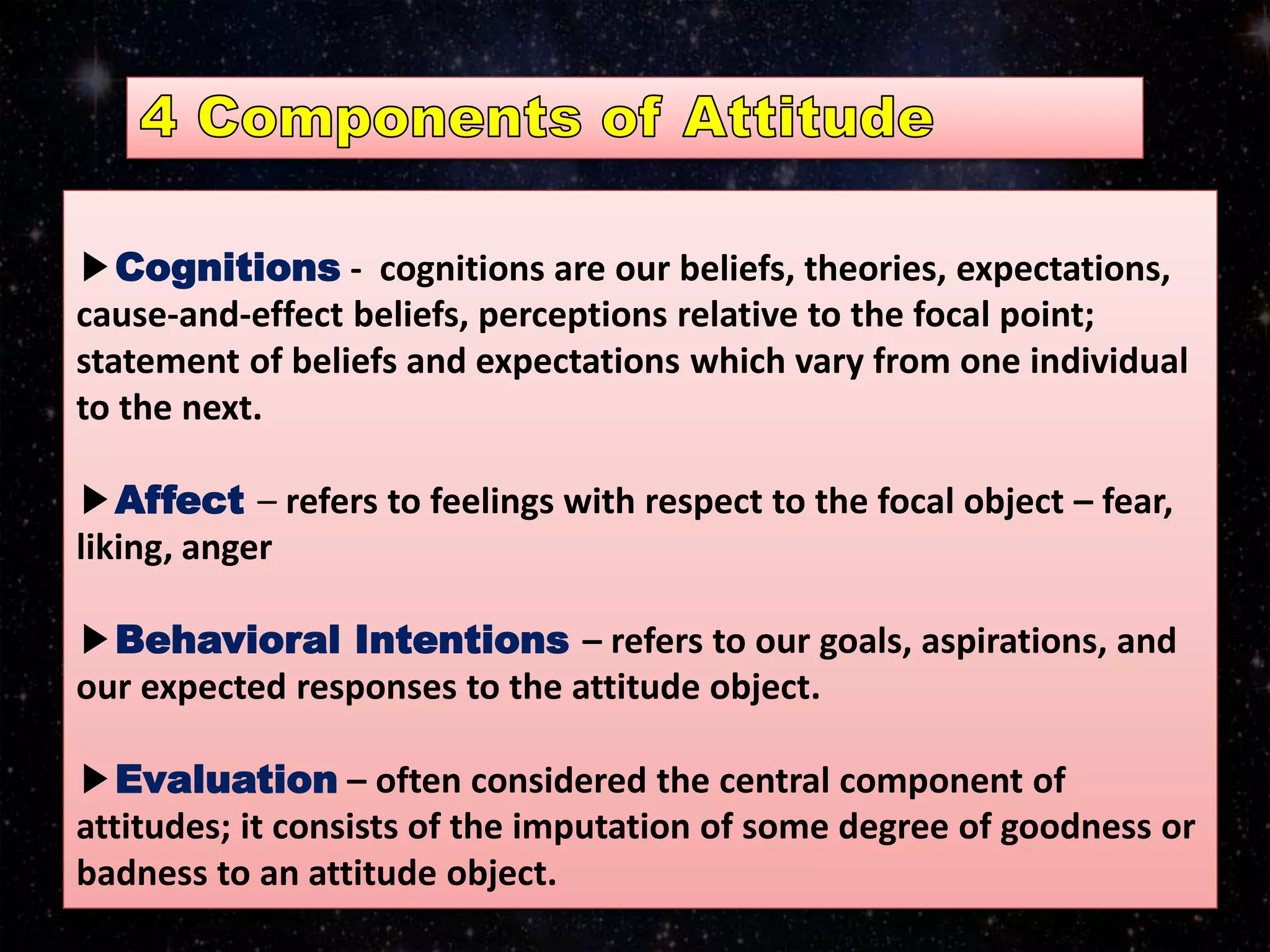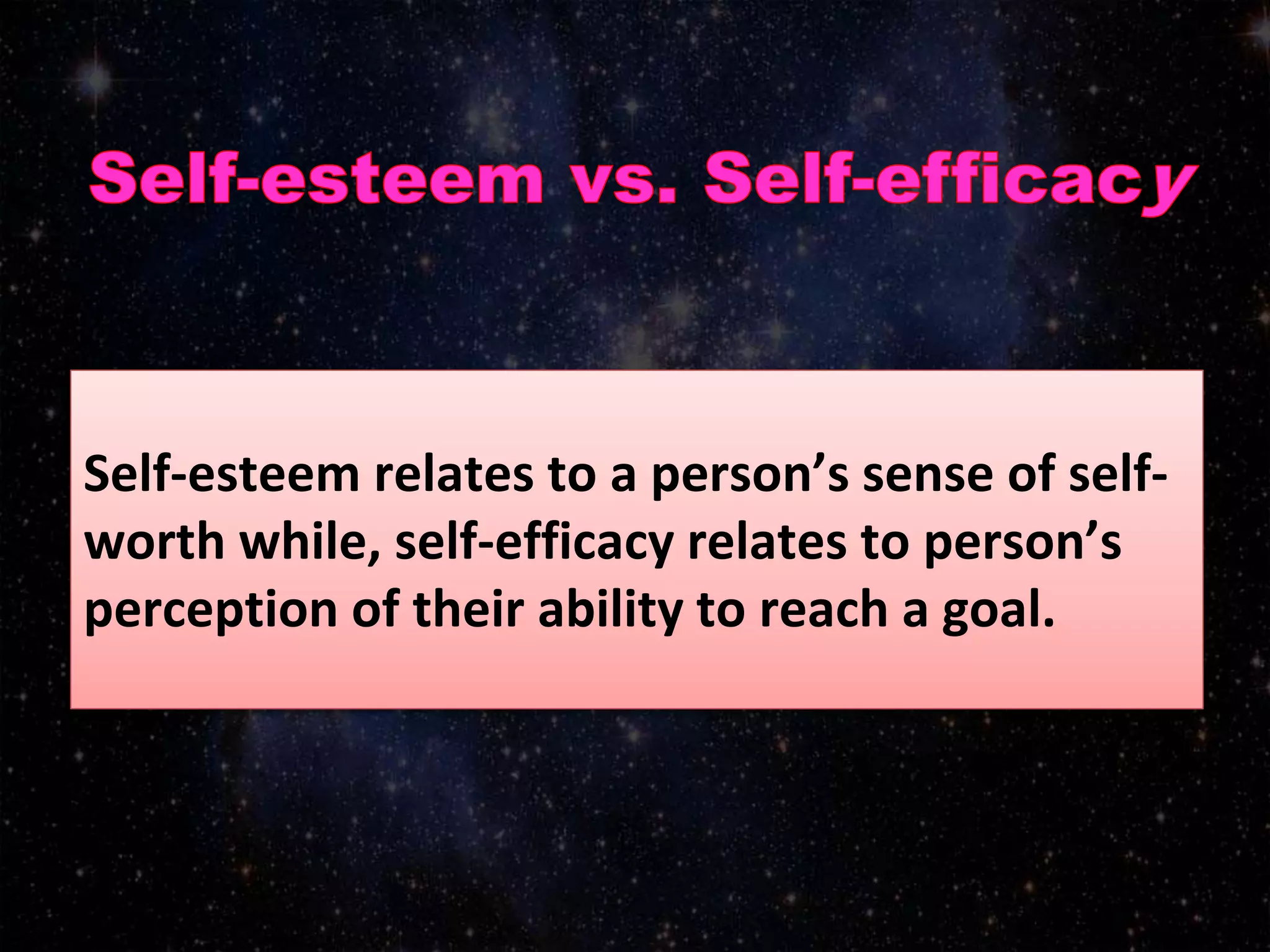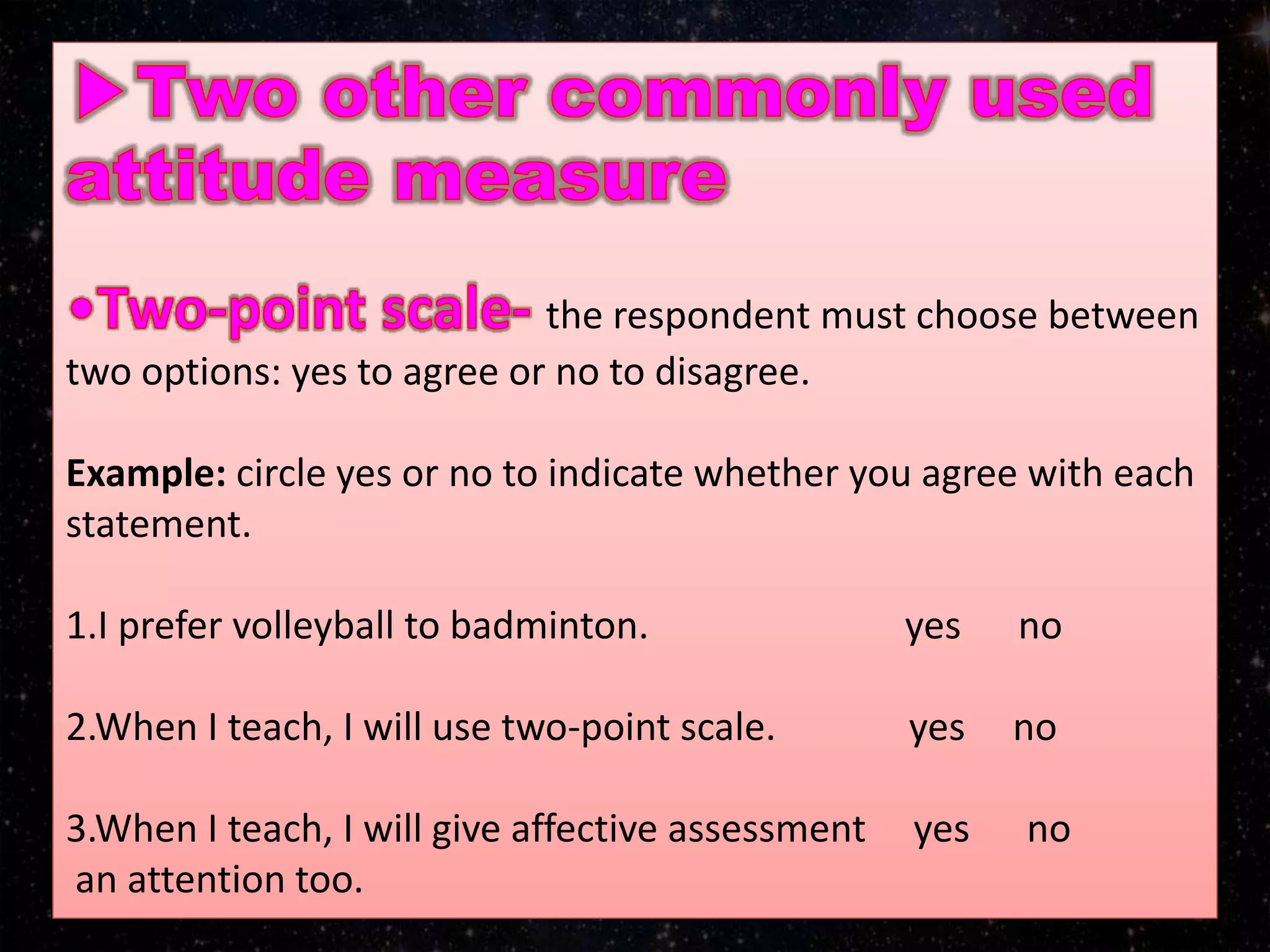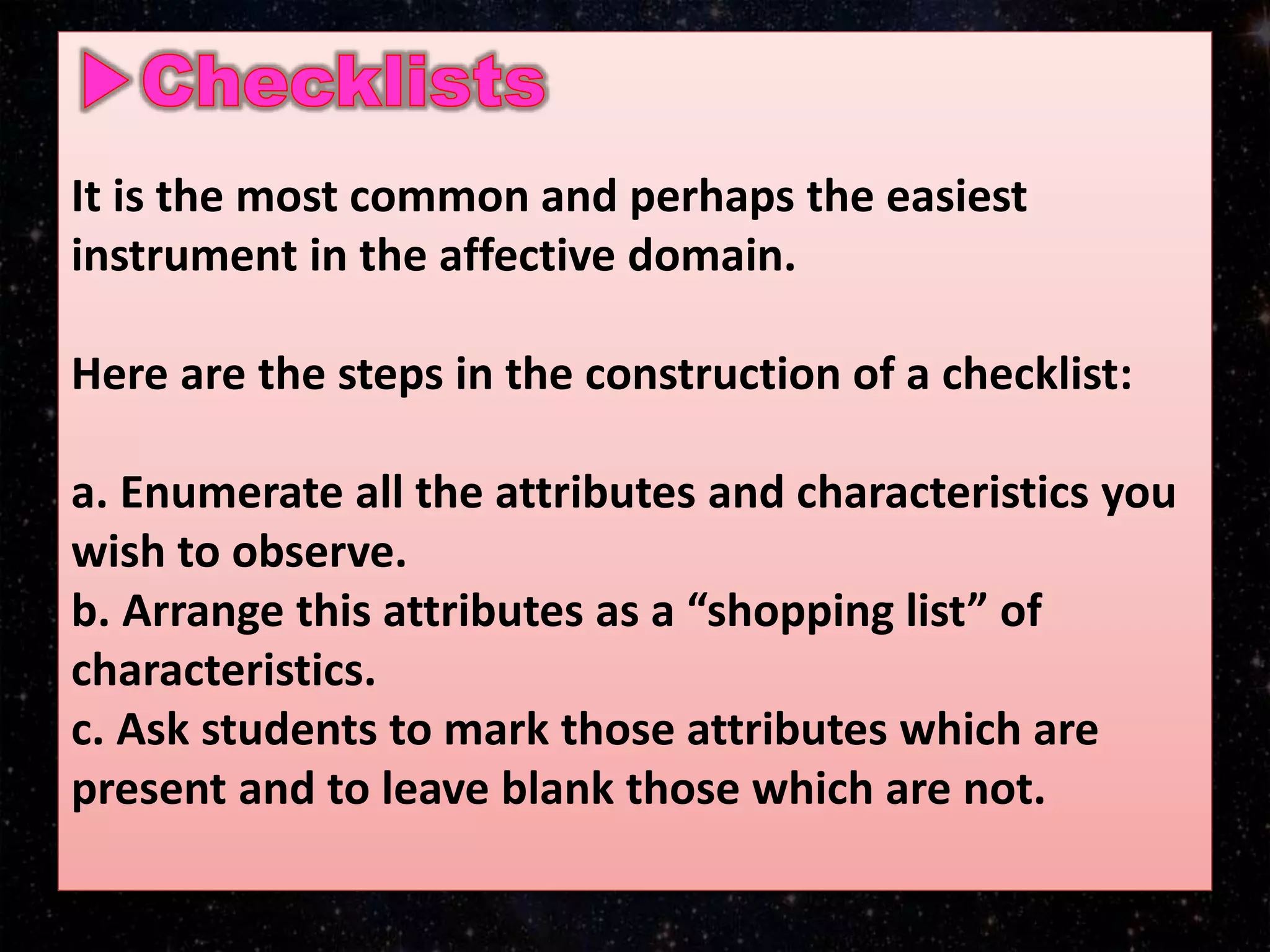The document discusses affective assessment and various methods for measuring attitudes and values in the affective domain. It begins by explaining affective assessment and its place within Bloom's Taxonomy, specifically measuring a student's attitudes, interests, and values. It then describes several common methods for measuring the affective domain, including Likert scales, semantic differential scales, Thurstone scales, checklists, and Guttman scales. Examples are provided for each method. The goal of affective assessment is to evaluate aspects of learning beyond just cognitive knowledge, focusing on a student's underlying emotions, feelings, and values.



